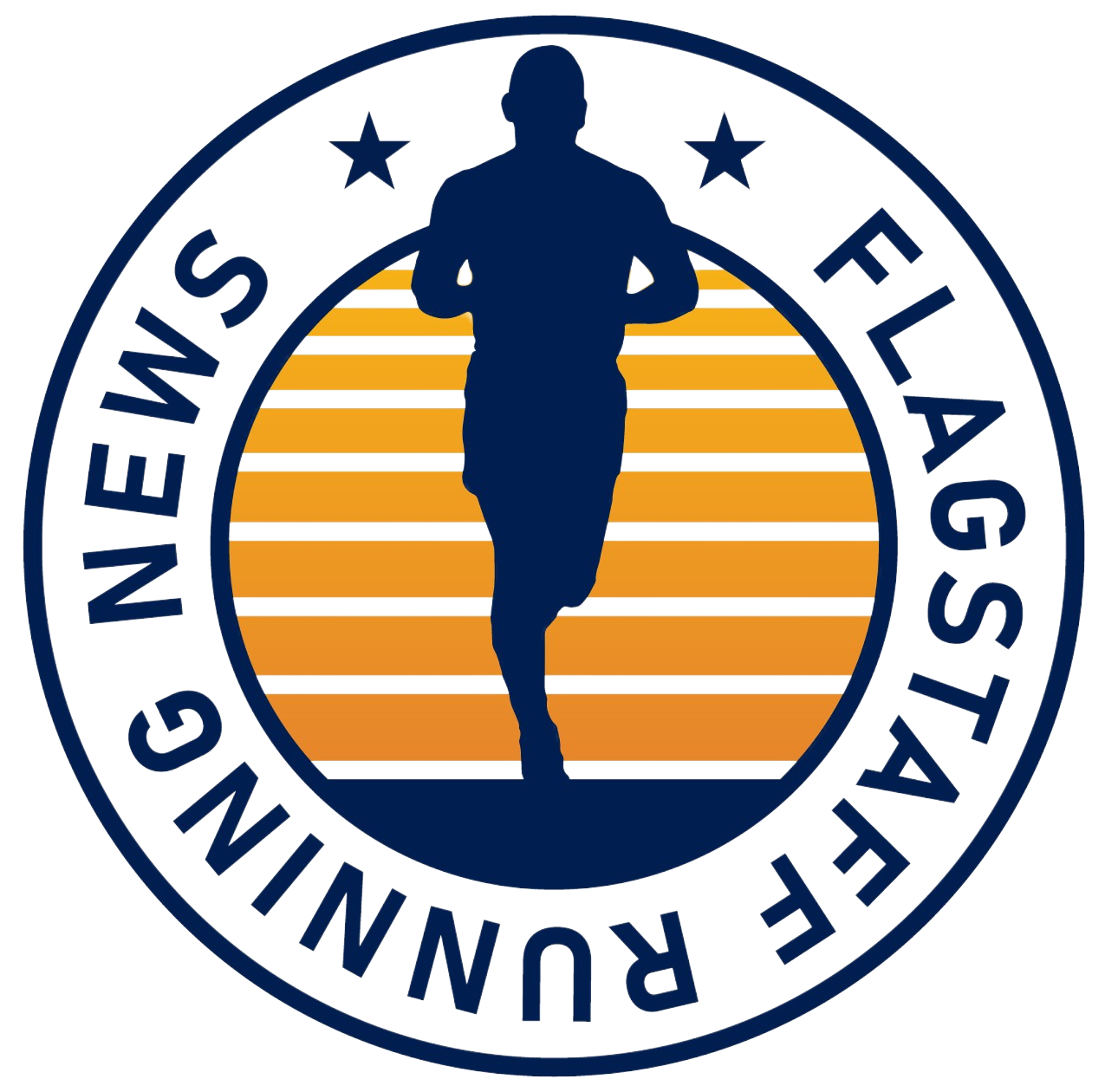Maggi Congdon, like nearly all NAU distance runners, had a big adjustment to make when she first hit Flagstaff a few years ago to start college training.
Altitude?
Nah. Congdon was just fine with that. She was born and reared in the Colorado ski-resort town of Steamboat Springs at an elevation (6,867 feet) that is comparable to Flagstaff’s, so the thin air never bothered her, anyway.
Rather, the change that greeted Congdon in 2020, who will compete for the Lumberjacks in the NCAA West Regionals 1,500 meters this week, had to do with the training itself.
In short, there was more of it. More mileage. More intensity. More challenging teammates. Just more, period.
Congdon, make no mistake, was a star prep runner at Steamboat Springs High in a state renown for producing distance talent: multiple state champion in track, an elite cross country runner and a member of the 2019 USATF Youth Mountain Running Team that competed in Italy and Argentina.
But all her teenaged success came off of no more than 25 miles a week of running – a pittance compared to many high-profile preps – and she didn’t even training year-round, either. Nordic skiing replaced running in the harsh northern Colorado winters. That Congdon thrived in high school, she said, is a testament to her teammates and a wise Steamboat coaching staff, which emphasized fun and participation over strict adherence to mile splits.
Steamboat, then, was a chill program in more ways than one.
“I’m so grateful for my high school team, and my coaches were amazing,” said Congdon, a fourth-year junior at NAU. “It was such a good program because it was not very intense. It was more of a kind of just-get-people-to-run and, obviously, there were opportunities to take it to another level if you wanted it.
“I didn’t run much then. It was just racing to get into shape and things like that. Looking back, although it did make the transition to college a little bit difficult because it’s such high intensity, that also allowed me to improve so much. There was a lot of potential I hadn’t reached yet in high school, a lot of room for growth. I was very grateful not to get burnt out at a young age.”
What might be scary to the competition, and enticing to Mike Smith and the rest of the NAU coaching staff, is that Congdon, indeed, hasn’t come close to peaking. Thanks to Covid extensions and some redshirting, Congdon will have a full year in 2024-25 (yes, including cross country) to continue her upward spiral.
Congdon already has ascended pretty darn high. She is coming off a breakout indoor track season, which saw her advance to the NCAA finals in the 800 and 1,500 meters, despite being ill the week of the meet in Boston. Granted, she had a slow start to the outdoor season this spring, due to her illness and nagging injuries, including an Achilles problem.
But after a few weeks off – substituting cross training via, bike, elliptical and swimming – Congdon has returned in the past three weeks and contributed mightily to the women’s team’s overwhelming victory in the Big Sky Conference meet. Congdon won the 800 in Bozeman, Mont., placed third in the 1,500 won by teammate Annika Reiss, and ran the third leg of the winning 4×400 meter relay.
Her times this year may not be as impressive as in indoors – or as she hoped – but she’s just now rounding into form after the injuries stymied her training. She showed flashes of her improved self on May 4 at the Oxy Invitational in Los Angeles, opening her outdoor season running the 1,500 in 4:16.33 (fifth fastest in NAU history) and finishing second to professional runner Elly Henes.
So, the upside for Congdon is huge, seemingly. After the conference meet, she had nearly two more weeks of training to regain fitness and sharpen her splits before traveling to Arkansas for this week’s regionals, with hopes of advancing to the NCAA finals in Eugene, Ore., in early June.
Even if Congdon should fall short, though, the future seems as bright as the snow-capped San Francisco Peaks on a sunny day, as evidenced by the school-record 2:02.20 time in the 800 meters she ran indoors in Seattle’s Husky Classic.
Minor injuries have dogged Congdon throughout her college career, making it seem to advance in fits and starts. She redshirted the outdoor season in 2023 because of a few persistent niggles, and this spring she was unable to race as much and as well as she would have liked.
But considering where she was when she first stepped foot on NAU’s campus, she’s already leaps and bounds better than before.
Congdon said she first started feeling comfortable and confident in her collegiate running last fall during cross country season, when she finished in 60th place (fifth on the team) as the Lumberjacks came within a point of upsetting North Carolina State for the NCAA title. Then, indoors, she blossomed in her specialty, the short events, 800 and 1,500.
Had she not been sick, Congdon believes she could have placed higher than eighth in the finals of both events.
“In the moment, obviously, I wanted things to go differently, but once I was able to reflect on it a little more, I was still happy with it,” she said. “Overall, the progress that I made that season, on the whole I was happy with it.”
Naturally, she assumed she’d just keep improving heading into the outdoor season. But the Achilles injury, though not major, forced a temporary halt.
“Everything overall has been minor,” she said. “The longest was a month or so. A lot of it I’ve been able to train through, maybe with lower mileage and cross training. I’ve been fortunate that, although I’ve had injuries, nothing’s got too much in the way of training.”
The NAU coaches did not rush her back – the same way, she said, they didn’t rush her ramp up in mileage as a freshman – and that could be the big reason why Congdon is not trying to double in Arkansas, competing in the 800 as well as the 1,500, as she did during the indoor season.
“Me and Coach Smith didn’t talk much about doubling outdoors,” she said. “Honestly, it worked out because my season was kind of abbreviated. For indoors, though, it was a little more doable because it was just one weekend where you doing both. But four races at regionals and four races at nationals (outdoors) is a lot more. The main reason we wanted to do that at indoors was because it was my first time and I was really trying to get the most out of the experience as I could and get as many tactical races in as I could.”
Congdon conceded that the 800 is her best event, but she and Smith chose the 1,500 for various reasons, including the potential field. Ultimately, she believes her middle-distance future may be the 1,500.
“The more I run the 15 and mile, that will become equal if not better than the 800 just from running it more,” she said. “I’ve really gotten down how to race an 800, and I’m still a little bit trying to figure out the 1,500. Once I get in more of those races, it could be my best event.”
Her mind, she said with a smile, tends to drift and lose focus in the mile.
“I’ve got to not let my mind get ahead of me in the middle of (the 1,500) because even though it still a very short race, you know, in the 800 there’s no time to even think at all. I’m still trying to figure out the mental side of the 1500.”
Because she’s so speedy in the 800, as well as running the 400 relay, Congdon said she just needs to refine her tactical approach, knowing when he surge and when to match a competitor’s move.
“That’s one thing I’m learning with it, too, trusting myself more with that (kick),” she said. “A lot of times in the 1,500, the move is made with 600 out, even. I still have to work on just trusting myself that I can go that early. But, yeah, I always have been able to run the last 200, 300 really well.”
That speed will benefit Congdon in cross country next fall. Though Congdon admits she’s still working on racing tactics and endurance for 6K cross country, she believes she can be an important contributor on a team expected to be stacked with talent and be a favorite to win the title.
For now, though, Congdon is not looking ahead. She’s focused on four laps around the track in Fayetteville, Ark.


Leave a Reply